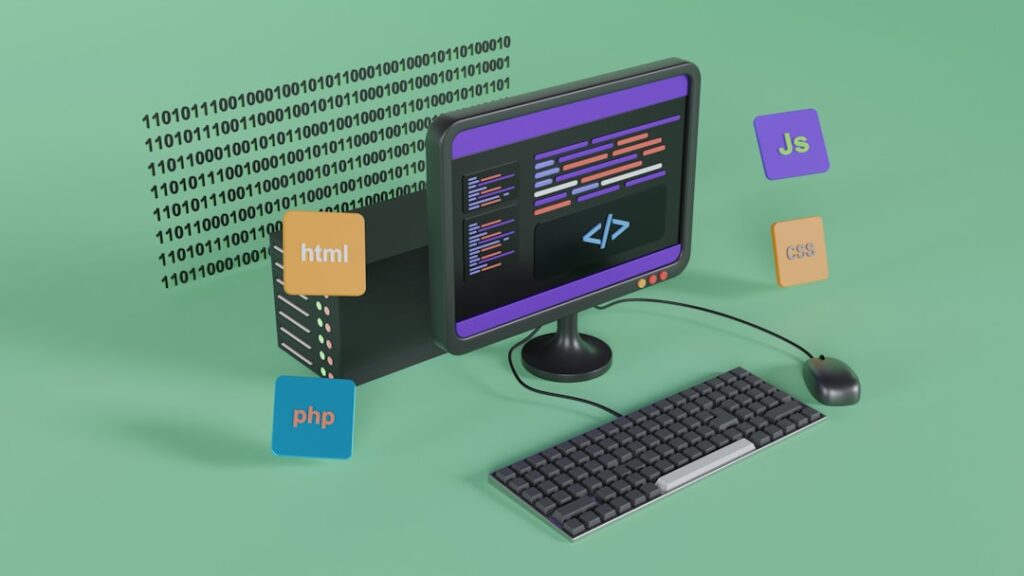Exploring No-Code Automation Platforms: Empowering Users Without Technical Skills
In today’s fast-paced digital landscape, efficiency and speed are critical. No-Code Automation Platforms are transforming the way businesses operate by enabling users to automate tasks without the need for programming knowledge. These tools streamline workflows, enhance productivity, and allow for rapid scaling of processes.
What Are No-Code Automation Platforms?
No-Code Automation Platforms are user-friendly solutions that allow individuals and organizations to create workflows and automate processes without writing code. They typically feature drag-and-drop interfaces, predefined templates, and user-friendly dashboards that make it accessible to non-technical users.
Key Features of No-Code Automation Platforms
- User-Friendly Interface: Intuitive design that makes it easy for everyone to navigate.
- Pre-Built Integrations: Seamless connections to popular software applications such as CRM systems, email marketing tools, and project management platforms.
- Templates and Blueprints: Ready-made workflows that can be customized according to business needs.
- Real-Time Analytics: Insights into the performance of automated tasks and workflows.
Benefits of Using No-Code Automation Platforms
The rise of No-Code Automation Platforms has revolutionized organizational processes. Here are some of the key benefits:
Increased Efficiency
With the ability to automate repetitive tasks, employees can focus on more strategic initiatives. This leads to improved overall efficiency within teams.
Cost-Effective Solutions
By reducing dependency on IT teams for automation, businesses can save significantly on development costs. Additionally, no-code tools typically require lower investment than traditional software development.
Empowerment of Non-Technical Users
No-Code Automation Platforms democratize technology use, allowing non-developers to build their solutions, which fosters innovation and agility within organizations.
Popular No-Code Automation Platforms
Several platforms have become leaders in the no-code space, each offering unique functionalities:
- Zapier: Best known for its ability to connect different apps and automate tasks across various platforms.
- Integromat (Make): Allows for complex integrations and automation scenarios with a visual workflow builder.
- Microsoft Power Automate: Ideal for businesses already using Microsoft products, streamlining their workflows.
- Bubble: Provides a robust environment for creating fully functional web applications without coding.
Challenges of Implementing No-Code Automation Platforms
Despite their advantages, organizations may face certain challenges when integrating No-Code Automation Platforms:
Security Concerns
As non-technical users build workflows, there’s a risk of overlooking security best practices. It’s essential to implement guidelines to mitigate such risks.
Integration Limitations
Not all platforms may have the integrations your business requires, which can limit the effectiveness of automating specific tasks.
Future Trends in No-Code Automation
The future of No-Code Automation Platforms looks bright, with several trends expected to shape their evolution:
Increased Artificial Intelligence Integration
We can anticipate the integration of AI capabilities, allowing for smarter automation that learns from user behavior and optimizes processes over time.
Focus on Collaboration Tools
As remote work becomes the norm, no-code platforms will likely offer more features aimed at enhancing collaboration and communication between teams.
Conclusion
No-Code Automation Platforms are paving the way for efficiency and productivity across industries. By empowering users without coding knowledge, these tools foster innovation and allow businesses to adapt quickly in a changing environment. As technology continues to advance, embracing these platforms will become essential for organizations seeking a competitive edge in their operations.
The Rise of No-Code Automation Platforms
No-code automation platforms have transformed the way businesses approach tasks that once required extensive technical knowledge. By democratizing technology, these platforms allow individuals from various backgrounds to create powerful workflows without needing to write a single line of code. This shift not only speeds up project timelines but also reduces costs significantly, as organizations can rely on their existing workforce to automate processes.
Benefits of Implementing No-Code Automation
One of the key benefits of adopting no-code automation platforms is the increased efficiency they offer. Many routine tasks that typically consume a considerable amount of time, such as data entry or reporting, can be automated. This enables teams to focus on higher-value activities, fostering creativity and innovation. Furthermore, the ability to quickly prototype solutions without the need for IT intervention means businesses can adapt more swiftly to changing market conditions.
Use Cases for No-Code Automation
No-code automation platforms are versatile and can be applied across various industries and functions. For instance, marketing teams utilize these tools to automate email campaigns and social media postings. Similarly, customer service departments can deploy chatbots and automated ticketing systems, enhancing response times and improving customer satisfaction. The healthcare sector also benefits, with no-code solutions streamlining patient intake processes and appointment scheduling.
Choosing the Right No-Code Automation Platform
When selecting a no-code automation platform, it’s essential to consider several factors. User-friendliness is paramount; the platform should provide a straightforward interface that allows users to build and manage workflows with ease. Additionally, integration capabilities with existing tools and systems are crucial for ensuring seamless operation across the organization. Organizations should also evaluate the scalability of the platform to ensure it can grow alongside their needs.
Future Trends in No-Code Automation
The future of no-code automation platforms looks bright, with advancements in artificial intelligence and machine learning set to play a pivotal role. These technologies can augment existing automation capabilities by providing smarter insights and predictive analytics. As more businesses recognize the benefits of no-code solutions, we can expect an increase in community-driven development, where users share templates and workflows, further enhancing the capabilities of these platforms.


